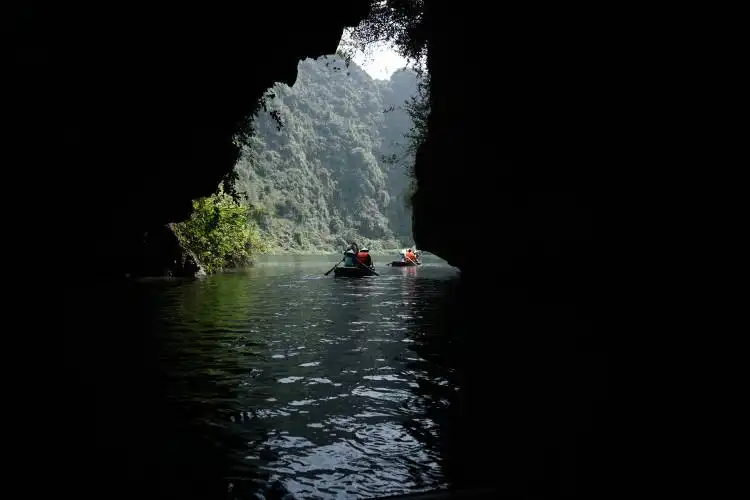Start an Indoor Trampoline Park
Bouncing Towards a Fun-Filled Profitable Venture
| Updated


INDOOR TRAMPOLINE PARK
Leap into the world of lucrative leisurely pursuits with an Indoor Trampoline Park! A bouncy oasis in a concrete jungle, this business caters to kids and adults alike, offering a spring-loaded form of fun and fitness. Swapping business suits for jumpsuits, jump into high-return revenues as you transform fun seekers into long-term customers. An Indoor Trampoline Park operates by offering a large indoor space filled with trampolines, providing a safe and fun environment for people to jump, play games and exercise.
Jump to Business Plan
RELATED BUSINESS IDEAS
Browse ALL Hospitality & Leisure Ventures Business Ideas
Discover Your Perfect Domain
Unlock the door to your online success with our hand-picked selection of premium domain names. Whether you're starting a new venture or rebranding an existing one, the right domain can set the tone for your digital presence. Browse through our curated list, each with its unique potential to enhance your brand's visibility and credibility.
INDOOR TRAMPOLINE PARK MINI BUSINESS PLAN
This a quick reality check to help you identify the strengths and weaknesses of your business concept before you dive in.
Expected Percent Margin:
- Gross Margin: 70-80%
- Net Profit Margin: 20-30%
Earnings Expectations:
- Daily Earnings: $500 - $1,000
- Weekly Earnings: $3,500 - $7,000
- Monthly Earnings: $14,000 - $30,000
- Annual Earnings: $168,000 - $360,000
Actions to Hit Those Numbers:
Facility and Equipment Management:
- Initial Investment: Approximately $1-2 million for space and equipment setup.
- Maintenance: Plan for regular maintenance and safety inspections.
Marketing and Customer Acquisition:
- Social Media: Schedule daily posts showcasing fun activities at the park.
- Local Advertising: Allocate about $1,000 a month for local ads and partnerships with schools.
Sales and Customer Experience:
- Staffing: Have enough staff to ensure safety and maintain customer experiences.
- Additional Activities: Consider providing additional activities like parties and fitness classes to increase revenue.
Cost Control:
- Rent/ Mortgage: Select a location where monthly costs are less than 10% of expected revenue.
- Utilities and Maintenance: Budget around $1,000-$2,000 per month for electricity, heating, and other utilities.
Business Operations:
- Open Hours: Operate at least 6 days a week, 10 hours a day.
- Customer Volume: Aim to service roughly 100-200 visitors daily.
Remember that these are general estimates. Actual results can vary based on location, competition, and other factors. Always seek advice from a financial advisor or business consultant for customized information.
NOT WHAT YOU HAD IN MIND? Here are more ideas



Browse ALL Hospitality & Leisure Ventures Business Ideas
Grab Your Business Website Name
Before you get caught up in the whirlwind of setting up your business, invest in a domain name. It's a small but significant step that lays the foundation for your brand and makes it easier for customers to find and trust you. Just like you wouldn't build a house without securing the land first, don't build a business without securing your domain name.
"Why? Can't that wait?" Here's why it shouldn't
Step 1: Determine if the Business is the Right Endeavor
Breakdown of Startup Expenses
Before starting an indoor trampoline park, it is important to understand the costs associated with opening the business. This includes costs for the trampolines, safety equipment, insurance, and any other necessary equipment. Additionally, there may be costs for permits, licenses, and other legal fees. It is important to research these costs and determine if the business is a feasible endeavor.
Breakdown of Ongoing Expenses
Once the business is open, there are additional expenses that must be taken into account. This includes costs for staff, maintenance, and repairs. Additionally, there may be costs for marketing, advertising, and other promotional activities. It is important to understand these costs and determine if the business can remain profitable.
Examples of Ways to Make Money
There are many ways to make money in an indoor trampoline park. This includes charging admission fees, selling merchandise, and offering memberships. Additionally, there may be opportunities to host events, such as birthday parties, corporate events, and team-building activities. It is important to understand these potential sources of income and determine if they can generate enough revenue to keep the business afloat.
Step 2: Name the Business
When it comes to naming a business, it is important to consider the name carefully. It should be something that is memorable and easy to pronounce. Additionally, it should be something that reflects the nature of the business. For example, an indoor trampoline park could have a name that includes the words “jump”, “bounce”, or “trampoline”. It is also important to make sure that the name is not already taken by another business. To do this, it is important to check with the local government to make sure the name is available. Additionally, it is important to check with the United States Patent and Trademark Office to make sure the name is not already trademarked.
Once a name has been chosen, it is important to make sure that the name is properly registered with the local government. This will ensure that the business is properly registered and that the name is legally protected. Additionally, it is important to make sure that the name is properly trademarked. This will ensure that the name is legally protected and that no other business can use the same name.
Once the name has been chosen and registered, it is important to make sure that the name is properly marketed. This can include creating a logo, website, and social media accounts. Additionally, it is important to make sure that the name is properly advertised. This can include creating print and digital advertisements, as well as creating promotional materials such as flyers and business cards.
Finally, it is important to make sure that the name is properly protected. This can include registering the name as a domain name and creating a trademark for the name. Additionally, it is important to make sure that the name is not used by any other businesses. This can include conducting regular searches to make sure that the name is not being used by any other businesses.
Step 3: Secure Financing
Sources of Financing
When starting an indoor trampoline park, there are a few sources of financing to consider. The most common source of financing is a business loan from a bank or other financial institution. This type of loan will require a business plan and a credit check. Other sources of financing include crowdfunding, angel investors, and venture capital.
Tips for Securing Financing
When seeking financing for an indoor trampoline park, it is important to have a well-thought-out business plan. This should include a breakdown of startup expenses, ongoing expenses, and ways to make money. Additionally, it is important to have a clear understanding of the financial projections for the business. It is also important to research the various financing options available and to understand the terms and conditions associated with each option. Additionally, it is important to have a good credit score and to be prepared to provide collateral if necessary. Finally, it is important to be prepared to answer questions about the business and to be able to explain the business plan in detail.
Step 4: Obtain Licenses and Permits
Types of Licenses and Permits
When starting an indoor trampoline park, it is important to obtain the necessary licenses and permits. Depending on the state and local laws, this may include a business license, a health permit, a fire safety permit, and a zoning permit. It is important to research the specific requirements for the area and to make sure all the necessary licenses and permits are obtained before opening the business.
Tips for Obtaining Licenses and Permits
The process of obtaining licenses and permits can be a complex one, so it is important to start the process early. It is also important to make sure that all the necessary paperwork is filled out correctly and that all the required fees are paid. Additionally, it is important to make sure that all the necessary inspections are completed and that all the safety requirements are met. Finally, it is important to keep copies of all the licenses and permits in a safe place for future reference.
Step 5: Find a Location
When looking for a location for your indoor trampoline park, it's important to consider the size of the space, the cost of the space, and the area demographics. It's also important to consider the visibility of the location, as well as the ease of access for customers. You should also consider the availability of parking, as well as the proximity to other businesses that may draw customers to your trampoline park. Additionally, it's important to consider the local zoning laws and regulations, as well as any building codes that may apply to your business.
Negotiating a Lease
When negotiating a lease for your indoor trampoline park, it's important to consider the length of the lease, the terms of the lease, and the cost of the lease. You should also consider the terms of the lease renewal, as well as the terms of the lease termination. Additionally, it's important to consider the terms of the lease transfer, as well as any restrictions on the use of the space. Finally, it's important to consider any additional costs associated with the lease, such as insurance, taxes, and utilities.
Step 6: Purchase Equipment
Types of Equipment Needed
When starting an indoor trampoline park, there are several pieces of equipment that need to be purchased. The most important pieces of equipment are trampolines, safety padding, and safety nets. Trampolines come in a variety of sizes and shapes and should be sized appropriately for the space available. Safety padding should be placed around the trampolines to ensure that any falls are cushioned. Safety nets should be installed around the trampolines to prevent anyone from falling off. Other pieces of equipment that may be needed include foam pits, basketball hoops, and other interactive games.
Tips for Purchasing Equipment
When purchasing equipment for an indoor trampoline park, it is important to shop around for the best prices. It is also important to make sure that the equipment is of high quality and meets safety standards. It is also important to consider the size of the equipment and make sure that it fits in the space available. Additionally, it is important to make sure that the equipment is easy to install and maintain. Finally, it is important to make sure that the equipment is covered by a warranty in case of any issues.
Step 7: Hire Staff
Types of Staff Needed
When opening an indoor trampoline park, it is important to hire the right staff to ensure the safety and enjoyment of customers. Depending on the size of the park, staff may include a manager, a few supervisors, and a team of attendants. The manager is responsible for overseeing the entire operation and ensuring that all safety protocols are followed. Supervisors are responsible for monitoring the trampoline area and ensuring that all customers are using the equipment safely. Attendants are responsible for helping customers with any questions or concerns they may have.
Tips for Hiring Staff
When hiring staff, it is important to look for individuals who are friendly, outgoing, and have a good understanding of safety protocols. It is also important to look for individuals who have experience in customer service and are comfortable working with children. Additionally, it is important to ensure that all staff members are properly trained in safety protocols and have the necessary certifications. Finally, it is important to ensure that all staff members are properly insured and have the necessary background checks.
Step 8: Market the Business
Once the business is up and running, it is important to market it to the local community. There are a variety of ways to do this, including traditional methods such as print ads, radio spots, and television commercials, as well as digital methods such as social media, email campaigns, and search engine optimization. It is important to create a comprehensive marketing plan that includes a mix of both traditional and digital methods. Additionally, it is important to track the results of each marketing effort to ensure that the business is getting the most bang for its buck.
Developing a Brand
Developing a strong brand is essential for any business, and an indoor trampoline park is no different. It is important to create a logo, slogan, and other visuals that will help to create an identity for the business. Additionally, it is important to create a consistent message across all marketing channels. This will help to ensure that customers recognize the business and its offerings.
Utilizing Word-of-Mouth
Word-of-mouth is an incredibly powerful marketing tool, and it is important to take advantage of it. Encourage customers to leave reviews on social media and other websites, and offer incentives for customers who refer friends and family. Additionally, it is important to stay active in the local community and participate in events and activities that will help to spread the word about the business.
Offering Special Deals and Promotions
Offering special deals and promotions can be a great way to attract new customers and keep existing customers coming back. Consider offering discounts for large groups, birthday parties, and special events. Additionally, consider offering loyalty programs and other incentives that will help to keep customers coming back.
Step 9: Open the Business
Opening a business is a big step and it requires a lot of planning and preparation. Before opening the business, it is important to make sure that all of the necessary permits and licenses have been obtained. Additionally, it is important to create a marketing plan and budget to ensure that the business is properly advertised and promoted. It is also important to have a plan for customer service and satisfaction. Finally, it is important to have a plan for managing the finances of the business.
Hiring Employees
When opening a business, it is important to have a team of qualified and experienced employees. This includes hiring a manager, an accountant, and other staff members. It is important to make sure that all employees are properly trained and have the necessary skills to perform their job duties. Additionally, it is important to have a plan for employee compensation and benefits.
Setting Prices
When setting prices for the trampoline park, it is important to consider the cost of the equipment, the cost of labor, and the cost of overhead. Additionally, it is important to consider the competition in the area and the local market. It is also important to consider the target market and the pricing that they are willing to pay. Finally, it is important to consider the cost of promotions and advertising.
Establishing Policies
When opening a trampoline park, it is important to establish policies and procedures for the business. This includes policies for safety, customer service, and employee conduct. Additionally, it is important to establish policies for refunds and returns, as well as policies for dealing with customer complaints. Finally, it is important to have a policy for dealing with emergencies.
EXPLORE MORE CATEGORIES
Browse ALL Business Idea Categories
TAKE THE NEXT STEPS









